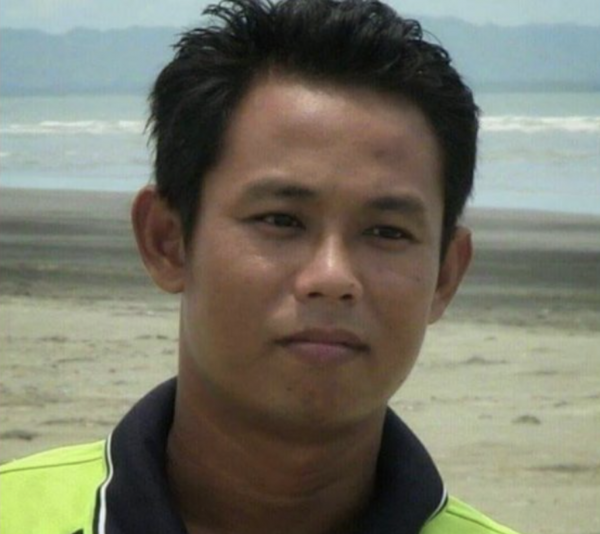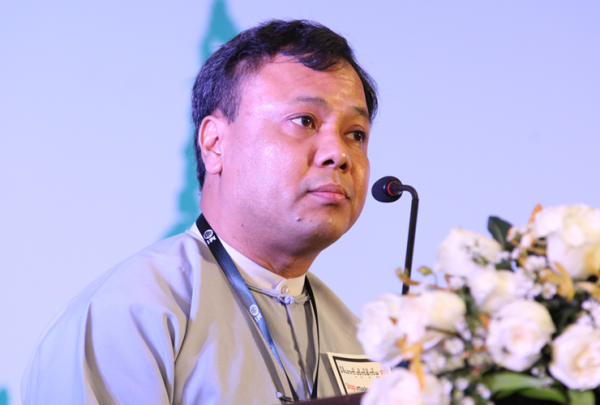Myanmar is currently readying itself for upcoming elections set to take place on Nov. 8, with 30 million voters expected to take part; an election broadly seen as the most crucial step, among other positive developments, in the country’s transition toward democracy.
It will be the country’s first and thereby freest general election since civilian rule was reintroduced in 2011, ending almost 50 years of military rule.
Myanmar’s Union Election Commission (UEC), the body responsible for the polls, as well as other important institutions, maintains that efforts are being made to provide for a free and fair election. However, there still remain some doubts about the fairness of the elections.
The first concerns the challenge that voters will face in reaching the polls themselves, and that political parties will face in undertaking their campaigns. Due to floods that occurred in July and August, the infrastructure of affected regions is currently in a very bad condition. This affects citizens insofar as it creates major differences between the regions in terms of being informed about the elections.
Additionally, sporadic armed clashes with ethnic militias across Myanmar continue, with the most recent having taken place in Kachin and Shan State. Further, errors on the eligible voter lists still occur frequently, which affects many who wish not to miss the chance to vote.
Finally, during the still-ongoing period of campaigning, incidents in which representatives of the state and some political parties have engaged in problematic conduct towards ethnic and religious minorities such as the Rohingya and Muslims have remained on the top of the agenda for international media covering the country. Nine foreign embassies issued a joint statement in mid-September regarding the prospect of religion being used as a tool of division and conflict, and called on Myanmar to take necessary steps to combat that. The government, however, rejected that call.
Nevertheless, many observers agree that the general approach towards the 2015 elections is positive in comparison with the 2010 elections. This is mainly because the election results of 2010 were known to have been dictated by the military junta and international observers were not allowed to monitor the vote. Moreover, the participation of the National League for Democracy (NLD) and smaller parties in the upcoming election helps to suggest the creation of a multi-party system in the country.
How free and fair is the media coverage?
As of September 2015, it seems that news media outlets provide increasing amounts of information about the upcoming election. Most dedicate special segments to election coverage, which is easy for readers to access. Media outlets are also providing online tools and resources, often under sections titled “Elections”, and informing the public by sharing articles, analyses and results of questionnaires, as well as interviews with crucial journalists, academics, politicians, activists and random citizens.
But the director of the UEC told news sources, that the freedom of media coverage will be limited pursuant to the election commission’s rules and regulations, meaning the extent of coverage will clearly differ from that seen in advanced democracies and therefore be somewhat unrecognisable to observers there.
One key regulation is that registered news organisations may assign a maximum of three reporters to each township, and those assigned must apply with the relevant sub-commission. According to local news reports, limiting the number of journalists could make electoral coverage difficult as it was not immediately clear whether journalists would be allowed to move out of the township in which they were registered.
To clarify, U Myint Kyaw, a member of the Myanmar Journalist Network (MJN) and Myanmar Press Council (Interim), told IPI that following a meeting between the UEC and the Interim Press Council on August 30, it was agreed that a journalist who is registered in one township can still cover the news from others without a valid ID, but cannot enter the polling station premises of a town where he or she is not registered.
U Myint Kyaw also told IPI about another obstacle: namely, restrictions imposed by the Ministry of Information (MOI) for the news coverage of state and joint venture media. The MOI instructed that those media outlets are only allowed to broadcast educational information for voters, which means no permission to engage in critical coverage of the election. In Myanmar, U Myint Kyaw said, there are six local FM and two TV stations which are owned by a tycoon said to be close to military generals, and this is considered to be the main reason behind the restrictions.
However, U Myint Kyaw said he has hopes for the elections, commenting: “We have to wait to set up independent TV or radio stations until the new broadcasting law is ready. This may be after the new government takes power in coming April.”
In an interview with the Myanmar Times, U Myint Kyaw also explained that journalists did not cover news as they wished in 2010 because most were censored. However, he said, media coverage and access to information has improved and self-censorship has decreased. Regarding media coverage, he also criticized some journalists who had announced their choice of vote, which he said went against their duty to express only accurate and objective information while covering the election.
Soe Myint, the editor-in-chief of the Mizzima Media told IPI that he had seen no major obstacles to media coverage so far, but he said there were concerns among the media community in Myanmar.
“One is the safety of journalists at a time of violence and crises during the elections… because there can be possible violence and conflicts in certain parts of the country,” he said. “A second concern is the access to have information, especially at certain constituencies, for example constituencies within the compound of the military. The challenges will be to go and cover freely these constituencies. These concerns have been raised with concerned bodies like UEC and the Press Council.”
Despite those concerns, Soe Myint said, journalists currently appeared to be freer to cover the upcoming elections in comparison with the 2010 elections. But he said it was too early to draw any particular conclusions on how free coverage of the upcoming elections ultimately will be.
“Things are much better than the 2010 elections but we are not sure,” he said. “We don’t know what will happen when the election is nearer.”
For journalists, another problem in covering the elections is that some politicians are too shy to answer reporters’ questions. For example, the NLD banned their candidates from talking to the media. According to news sources, only six of the party’s candidates have been allowed to speak to journalists.
Although this was criticised for hampering freedom of speech, the party claims that this action is a precaution, as they aim to win the election. However, coverage of this decision in itself is one of the many examples that censorship has receded and that the media, following the end of military rule, has become freer to cover actions of the opposition.
A recent analysis by the Myanmar Times also shed light on other problems in terms of media coverage. According to a public opinion survey conducted by the International Republican Institute between December 2013 and February 2014, Myanmar’s citizens are more likely to obtain information through radio, television and friends and family. Not many receive their information from newspapers, journals or the Internet.
As FM radio and TV channels are known to be in the hands of the government, pro-government supporters and the military, the focus of those outlets’ coverage is very limited. Additionally, some media organisations lack the necessary number of reporters, phone coverage and Internet access. Given the fact that there are 92 parties and more than 6,000 candidates, a lack of wide-ranging coverage is indeed problematic.
It seems that as country moves closer to elections and more information becomes available, only then will a full picture of how the political atmosphere in Myanmar affects the freedom of journalists covering the elections emerge.



